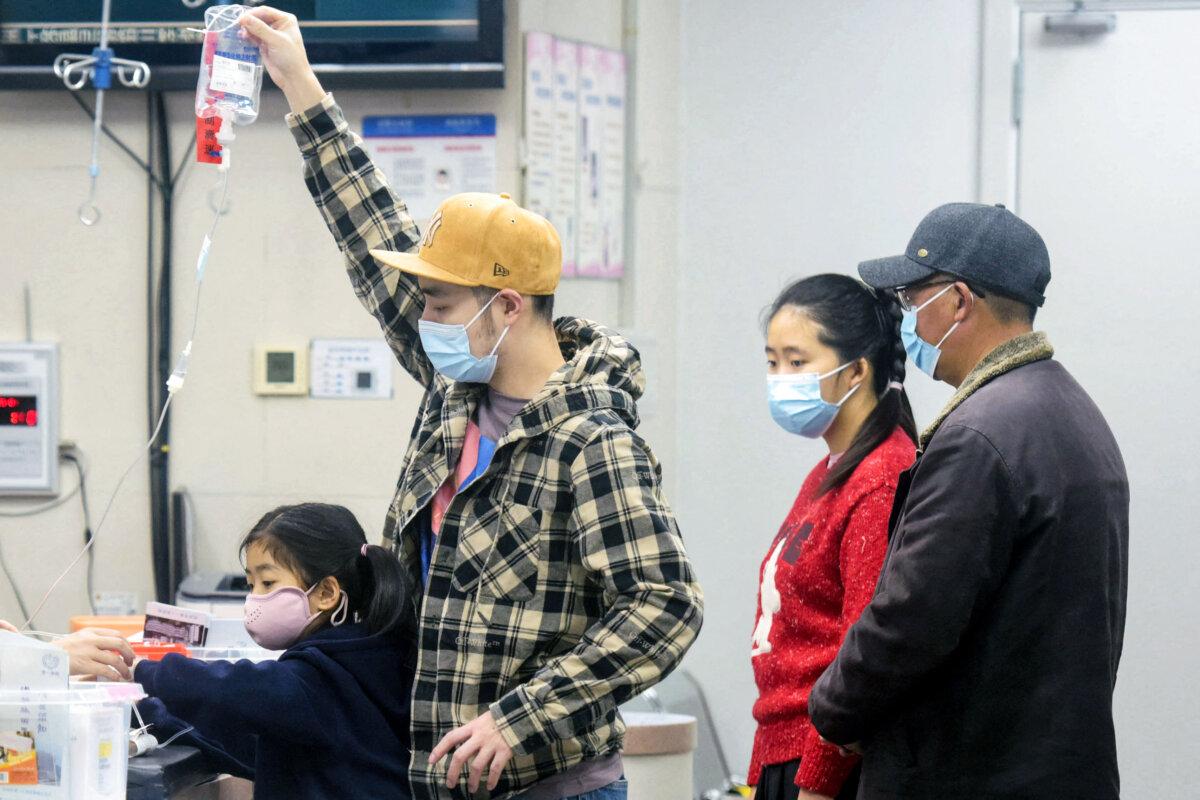The Chinese Center for Disease Control and Prevention (China CDC) has released its official data for March on COVID-19, influenza, and other respiratory viruses spreading in China, which has sparked some skeptical reactions from experts.
Mainland Chinese citizens suspect that the Chinese Communist Party (CCP) authorities are continuing to cover up the truth about respiratory disease epidemics in China, as official data continue to not match their lived experience.
The latest China CDC weekly update on “national sentinel surveillance of acute respiratory infectious diseases” was for the week of March 24 to March 30, and was issued on April 3. The China CDC said in the weekly report that it had collected respiratory samples from outpatient influenza-like cases and hospitalized severe acute respiratory infection cases in sentinel hospitals across the country, excluding Hong Kong, Macao, and Taiwan.
The test results showed that the main pathogens detected in outpatient respiratory samples were rhinovirus, COVID-19, and human metapneumovirus. The main pathogens detected positively in respiratory samples of hospitalized severe acute respiratory infection cases were respiratory syncytial virus, rhinovirus, and human metapneumovirus.
“This is a very vague and simple statistical report,” Sean Lin, assistant professor in the Biomedical Science Department at Feitian College and former U.S. army microbiologist, told The Epoch Times on April 25. He said the report “did not provide the specific number of cases or samples tested.”
Lin said he believes that human infections of avian influenza were omitted from the latest report because the regime is restricting the release of information about bird flu, especially H5N1, as it may already be spreading among humans and be one of the main causes of ongoing serious respiratory infections in China.
The China CDC said that “no influenza-like illness outbreaks were reported nationwide” in its latest China Influenza Surveillance Weekly Report issued on April 17, covering the period from April 7 to April 13.
The official report said the main pathogen causing respiratory infections across China is the influenza A viral strain subtype A(H1N1)pdm09.
“Since October 1, 2024, drug resistance monitoring has shown that 83 A(H1N1)pdm09 subtype influenza strains have reduced or highly reduced sensitivity to neuraminidase inhibitors,” the report states.
Lin said this is worth noting, even though the CCP is being deliberately vague about it.
“What is the percentage of this ‘highly reduced sensitivity’? Can it be interpreted as a ‘highly drug-resistant’ virus strain?“ he said. ”That is to say, Tamiflu—a neuraminidase inhibitor—commonly used on the market to treat influenza viral infections may be completely ineffective against such virus strains.
Official Data Different From Experience
Because of the CCP’s record of publishing unreliable data, including its underreporting of COVID-19 infections and related deaths since early 2020, anecdotal accounts by residents provide helpful supplementary information for understanding the situation on the ground in the totalitarian country.A Shanghai-based online writer, who did not give his name because of safety concerns, told The Epoch Times recently: “This time, the outbreak in Shanghai gives me a different feeling than the [2020 to 2022] COVID-19 outbreak. The people infected now are mainly children, and there are also elderly people, but not many. There have also been sudden deaths of young people in their 30s and 40s in the north, but this is rare in Shanghai.”
The Shanghai resident also said: “I went to Kunming [in southwestern China] last year and traveled to Tun Village. I had diarrhea at the time, and the COVID-19 nucleic acid test result showed that I was infected with COVID-19. However, the doctor said that the regulations did not allow them to write COVID-19 as the diagnosis, so they wrote gastroenteritis instead.”
The symptoms of common influenza B, influenza A, COVID-19, and norovirus are very similar, so there are more cases in ongoing viral infections in China, Jonathan Liu, professor at Canada Public College and director of Liu’s Wisdom Healing Centre, told The Epoch Times on April 26.
He said the Chinese regime is downplaying the current epidemic “to show that COVID-19 is under control in China, so as not to affect foreign investment and avoid causing panic among the people.”
“[The CCP] does this to maintain the regime’s stability,” he said.
Meanwhile, Chinese residents across the country continue to report an increasing number of sudden deaths and overcrowded hospitals.

Mr. An, a resident in the megacity of Shenzhen in southern China who did not give his full name because of safety concerns, told The Epoch Times in recent days: “There are many sudden deaths now of people of all ages, but more are young people.
“I have seen quite a few young people in their 20s or 30s who were not sick or had no symptoms suddenly collapse. I saw people collapse while walking on the street.”
Mr. Zhang, a resident of Nanyang city in Henan Province in northern China who did not give his full name because of safety concerns, told The Epoch Times in recent days: “Our funeral homes are quite busy, and the hospitals are very busy.
“I went to the hospital to visit a relative of mine who was hospitalized a few days ago. When I arrived at the hospital, the corridors were full of beds, including areas by the elevator doors. There was really no place to put more beds, especially in the cardiovascular and respiratory wards.”
Mr. Yuan, a resident of Fuyang city in Anhui Province in eastern China who did not give his full name because of safety concerns, told The Epoch Times in recent days: “Many people in their 40s, 50s, and 60s died suddenly. Funeral homes and hospitals are full.
“Some diseased were buried after cremation, and some were just buried secretly. All the burial spaces in cemeteries have been sold out.”






